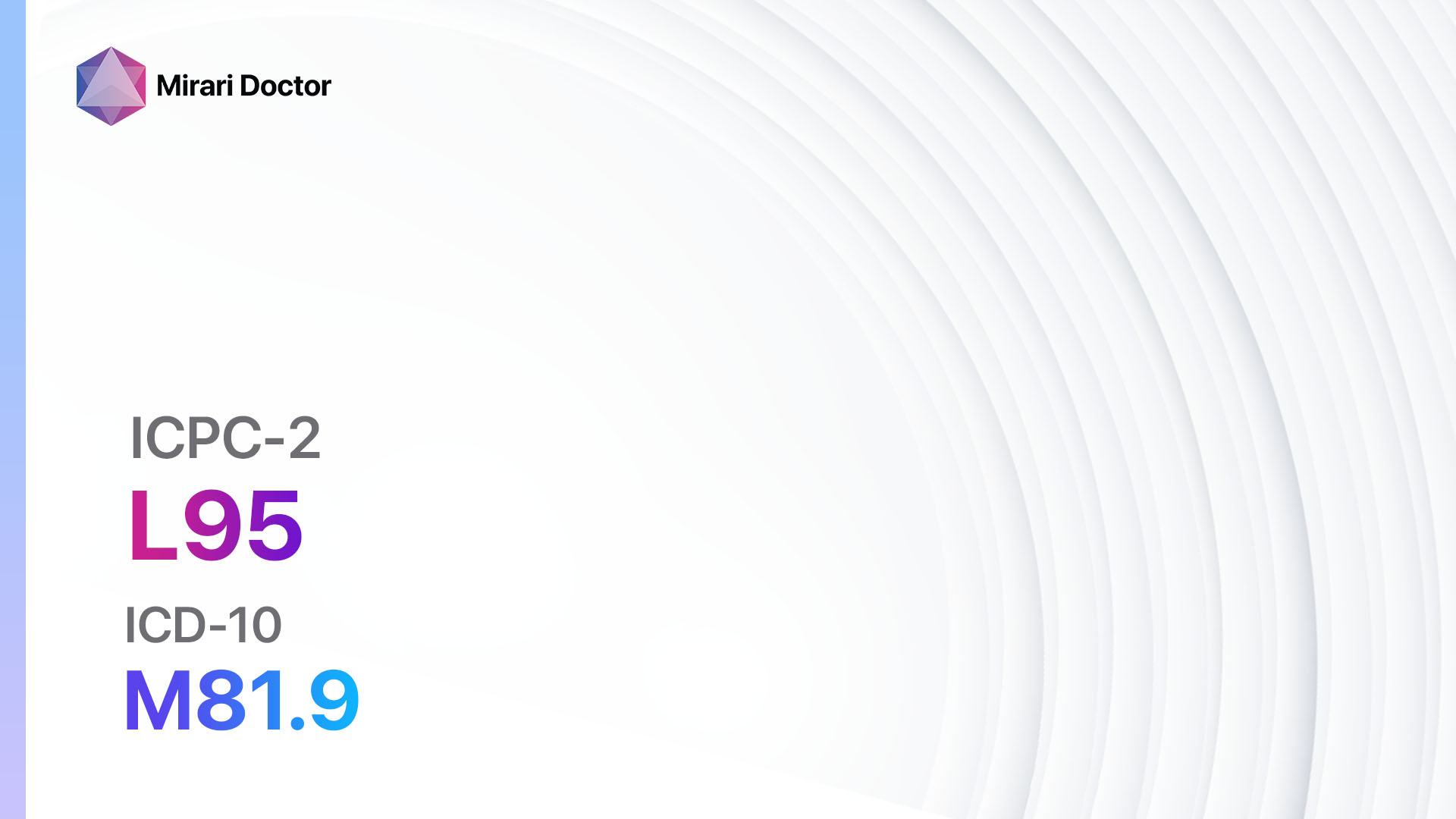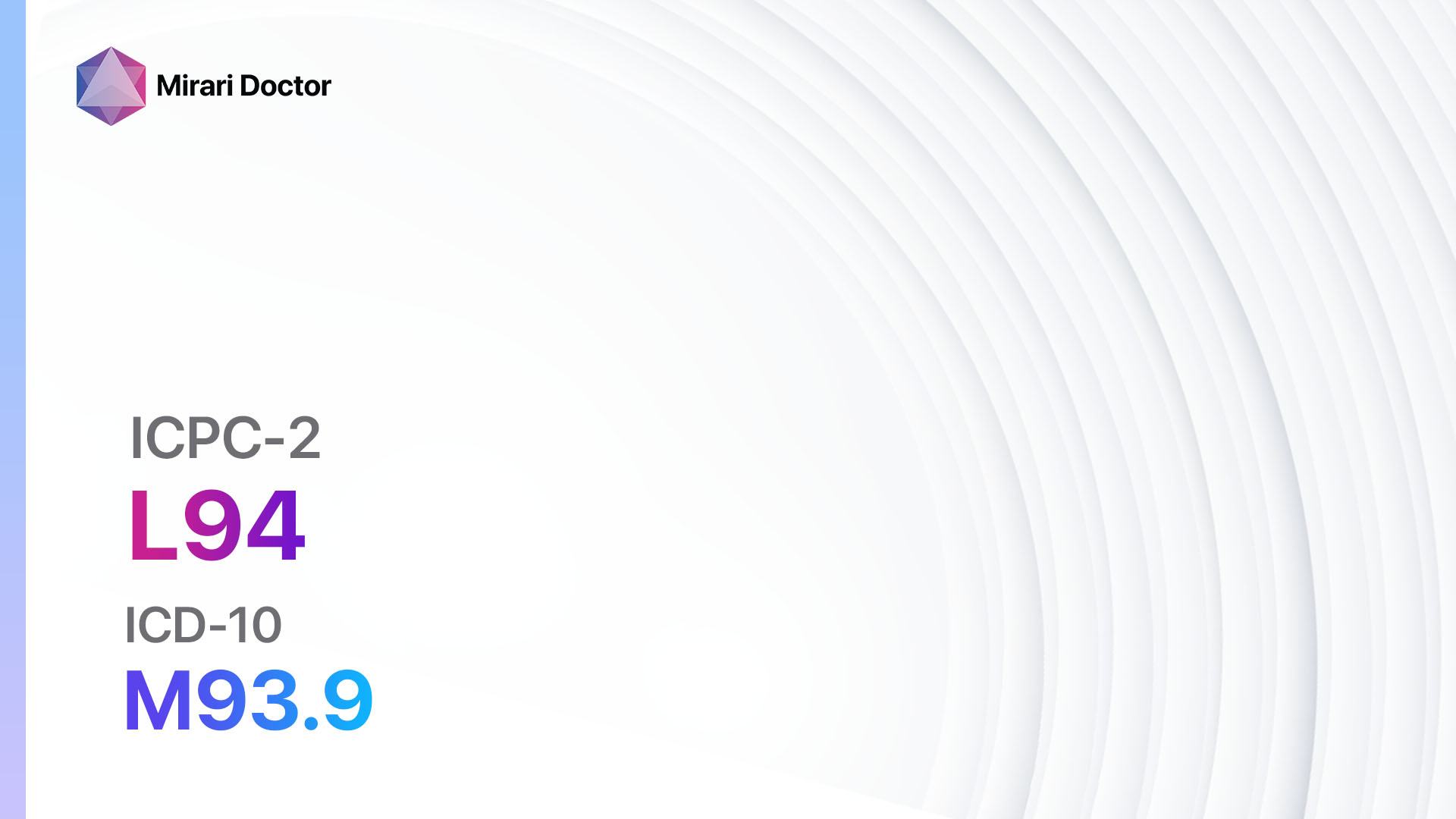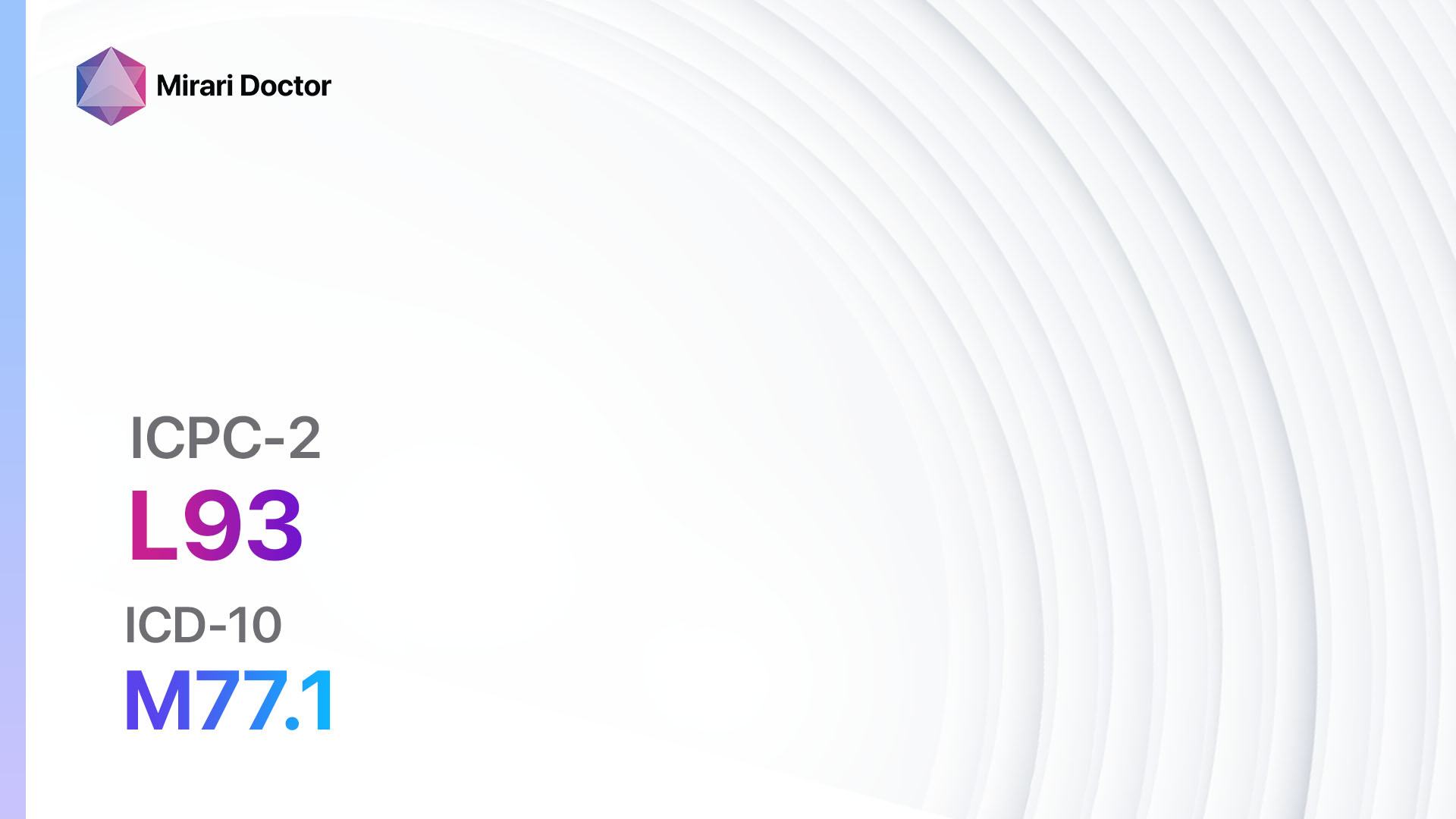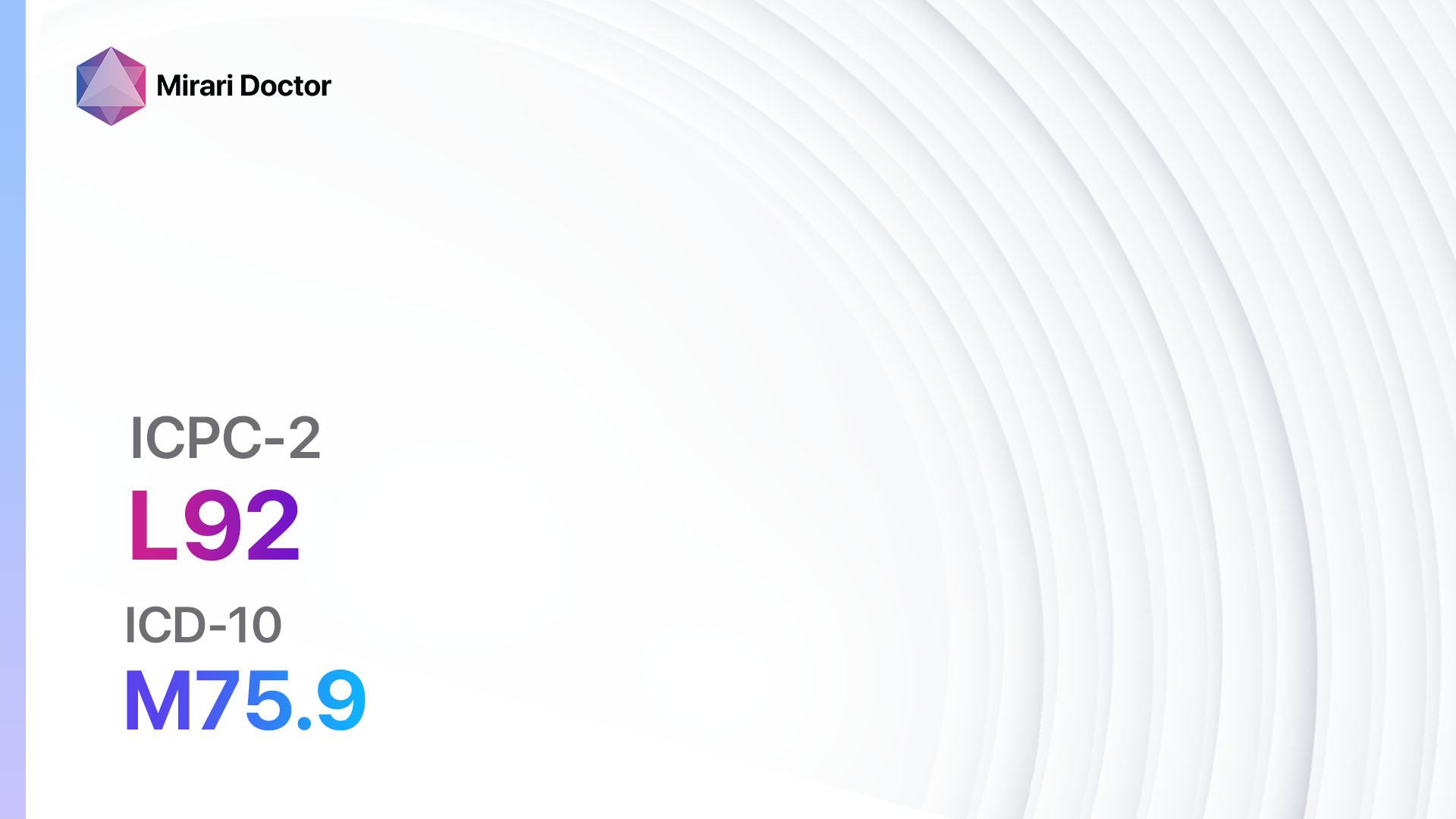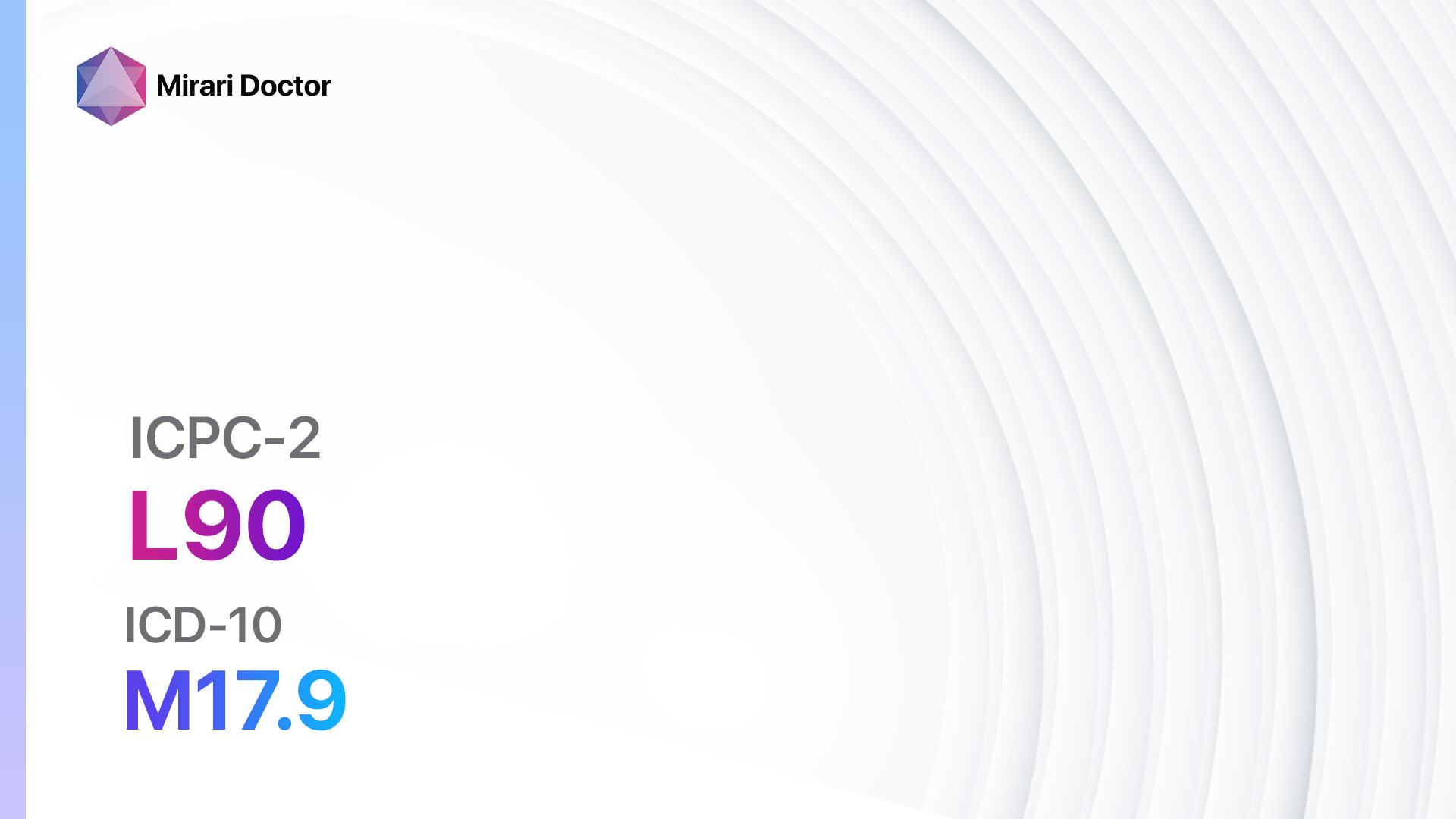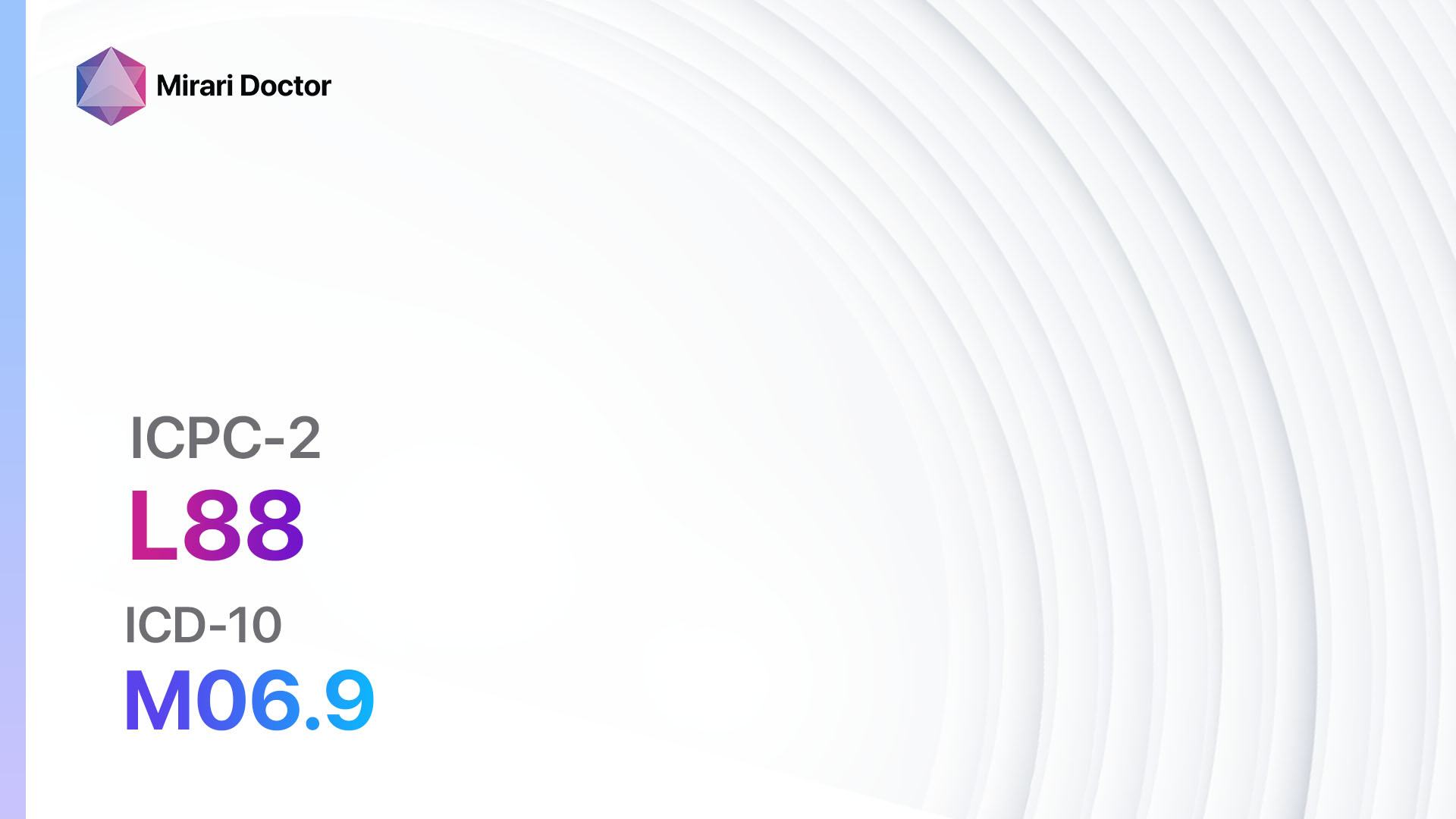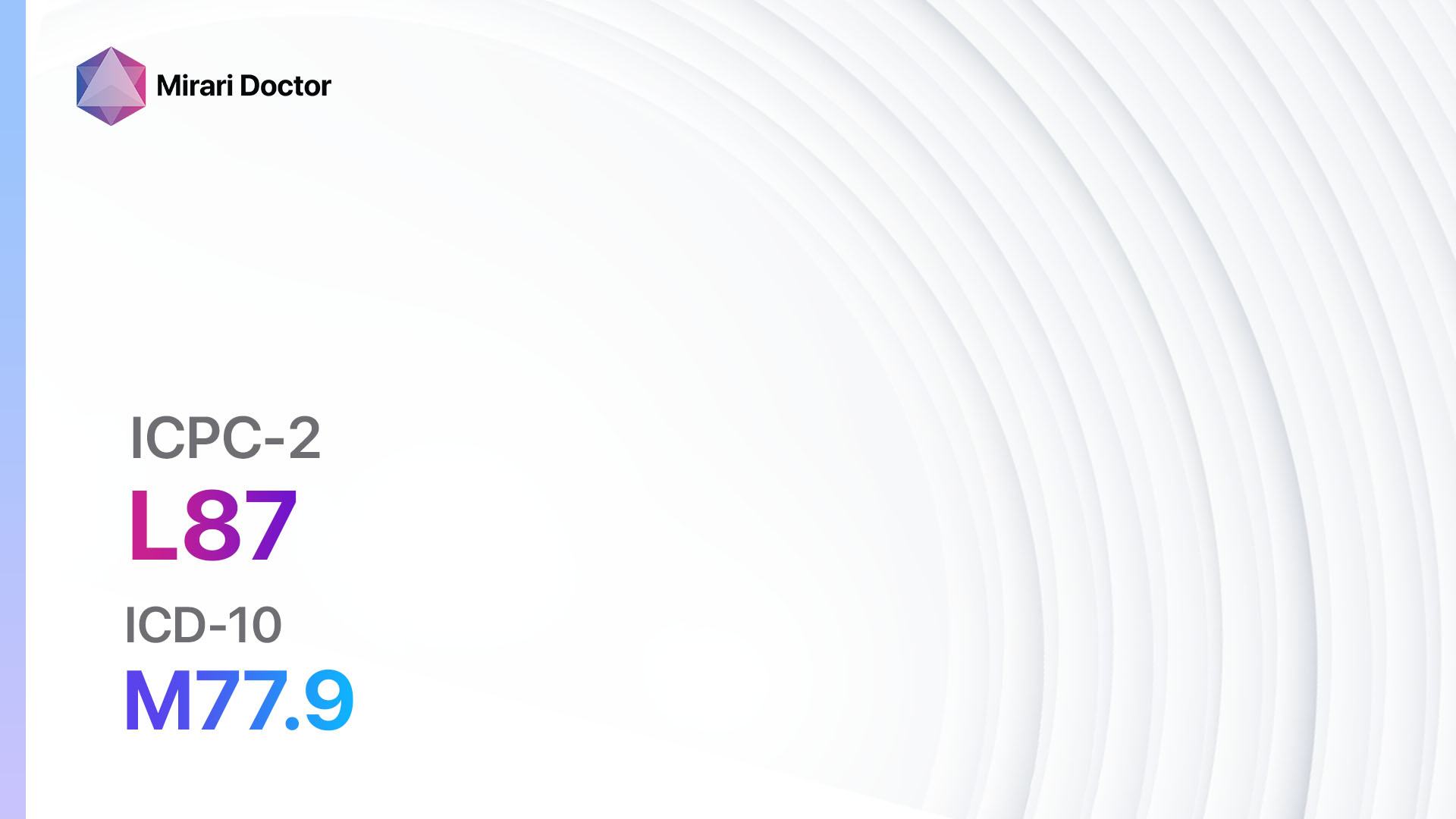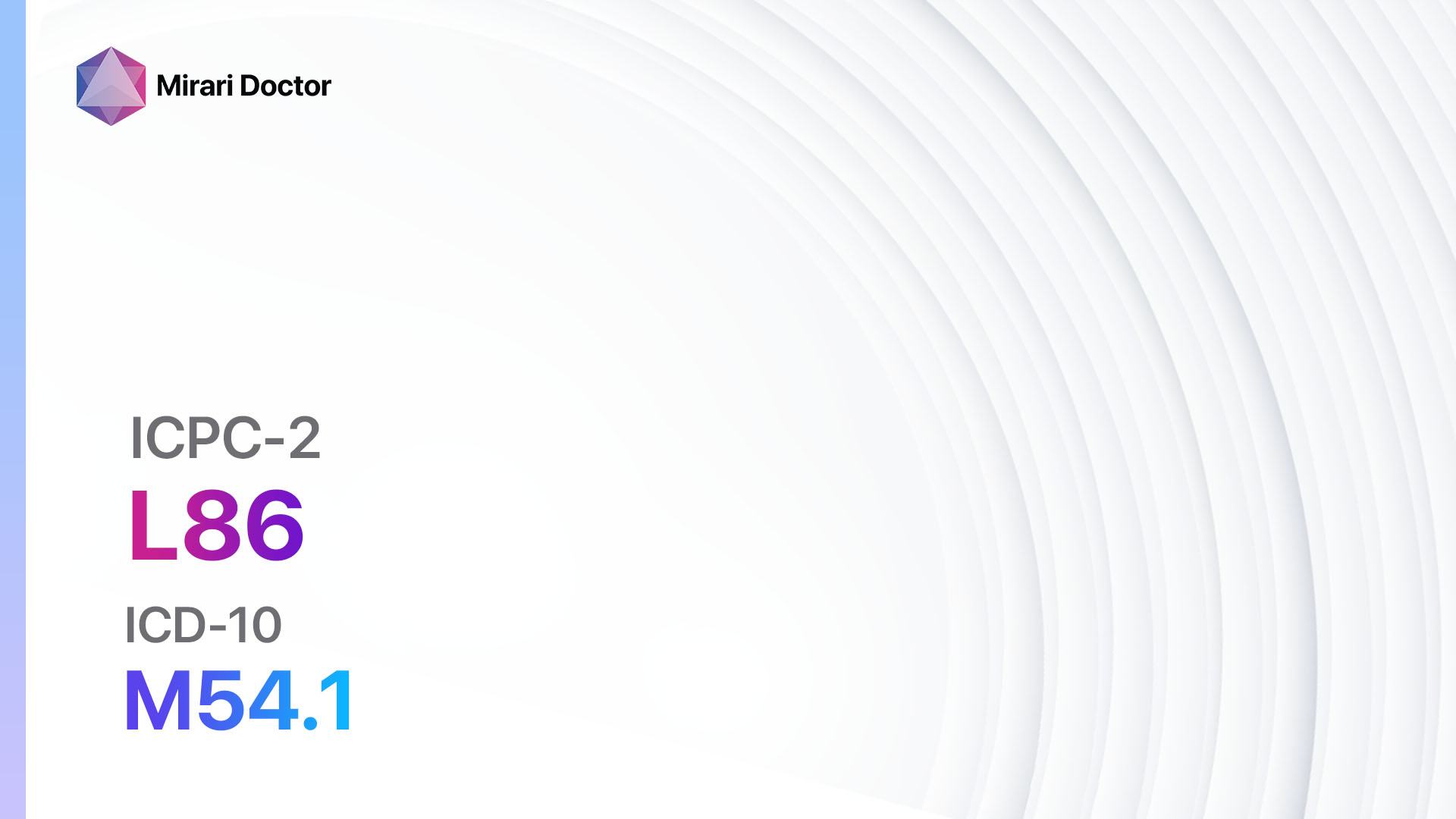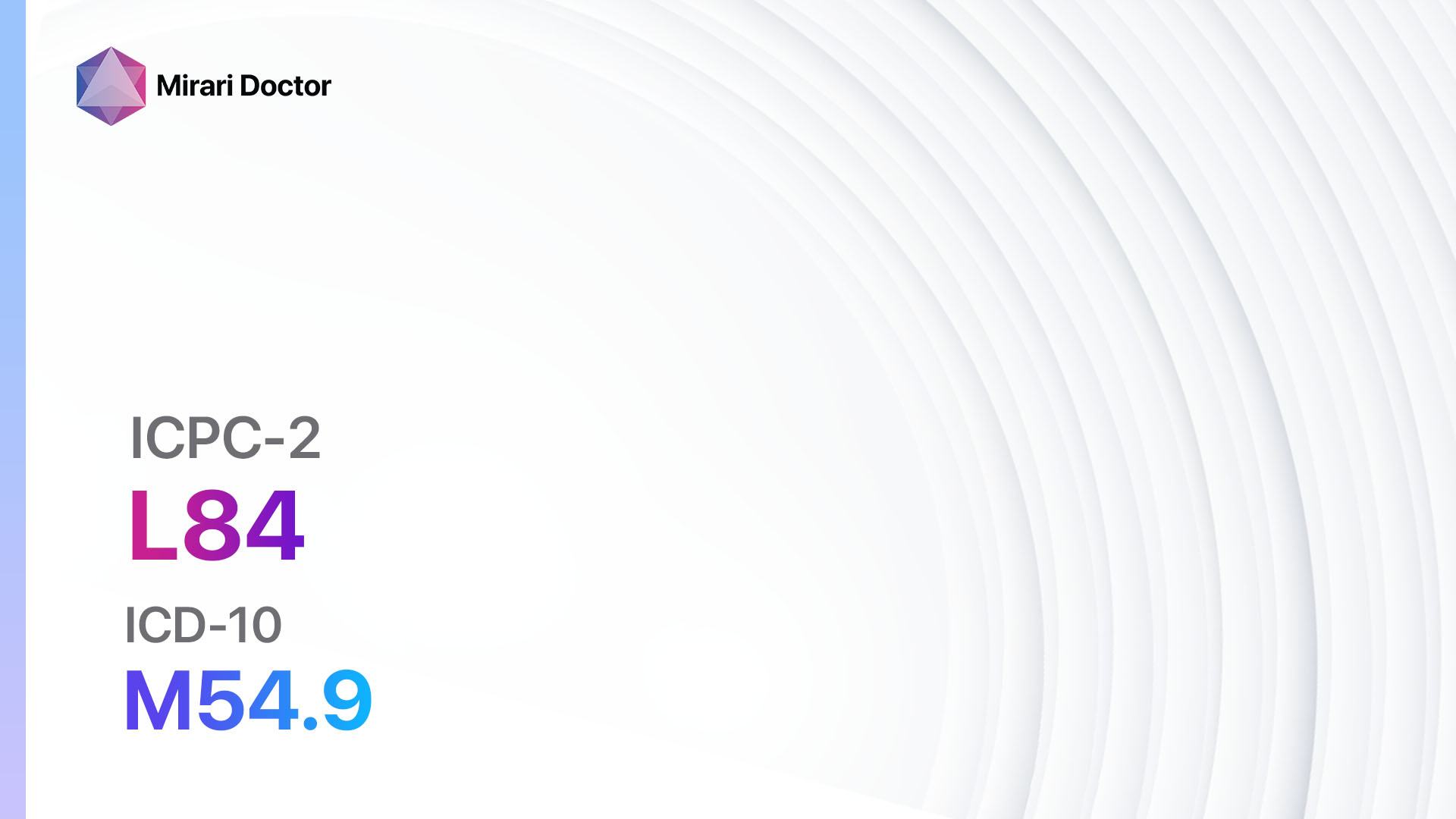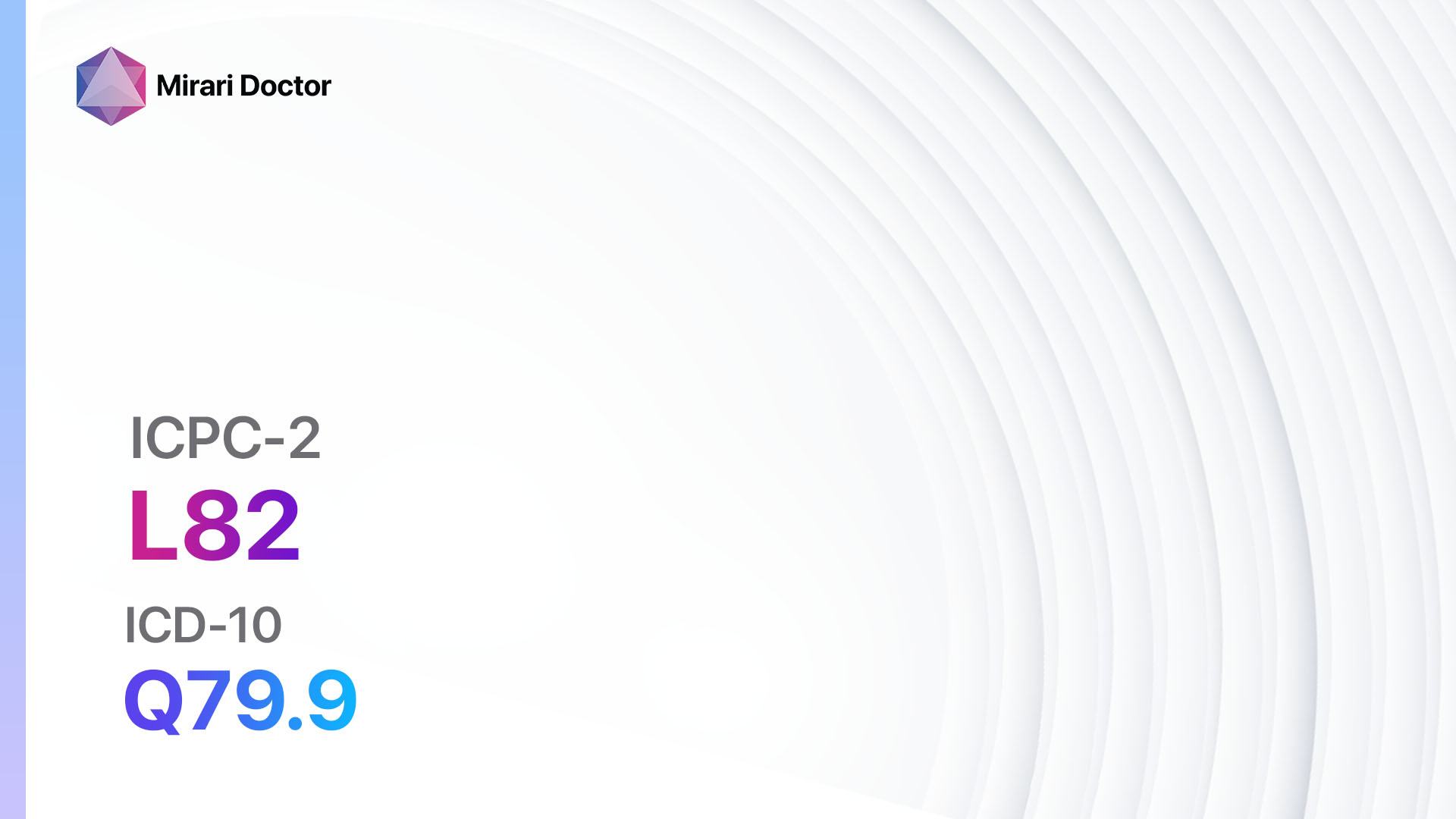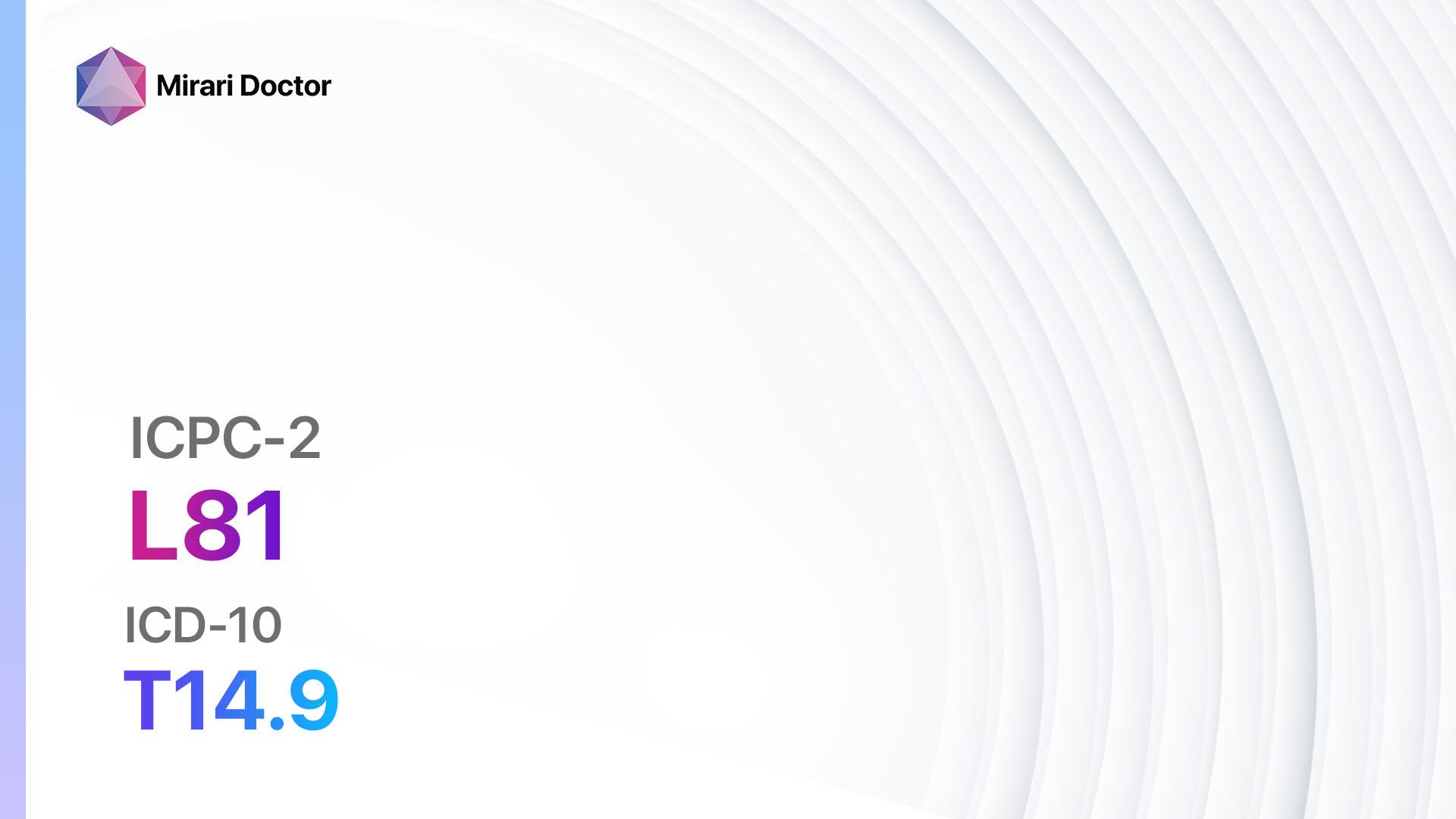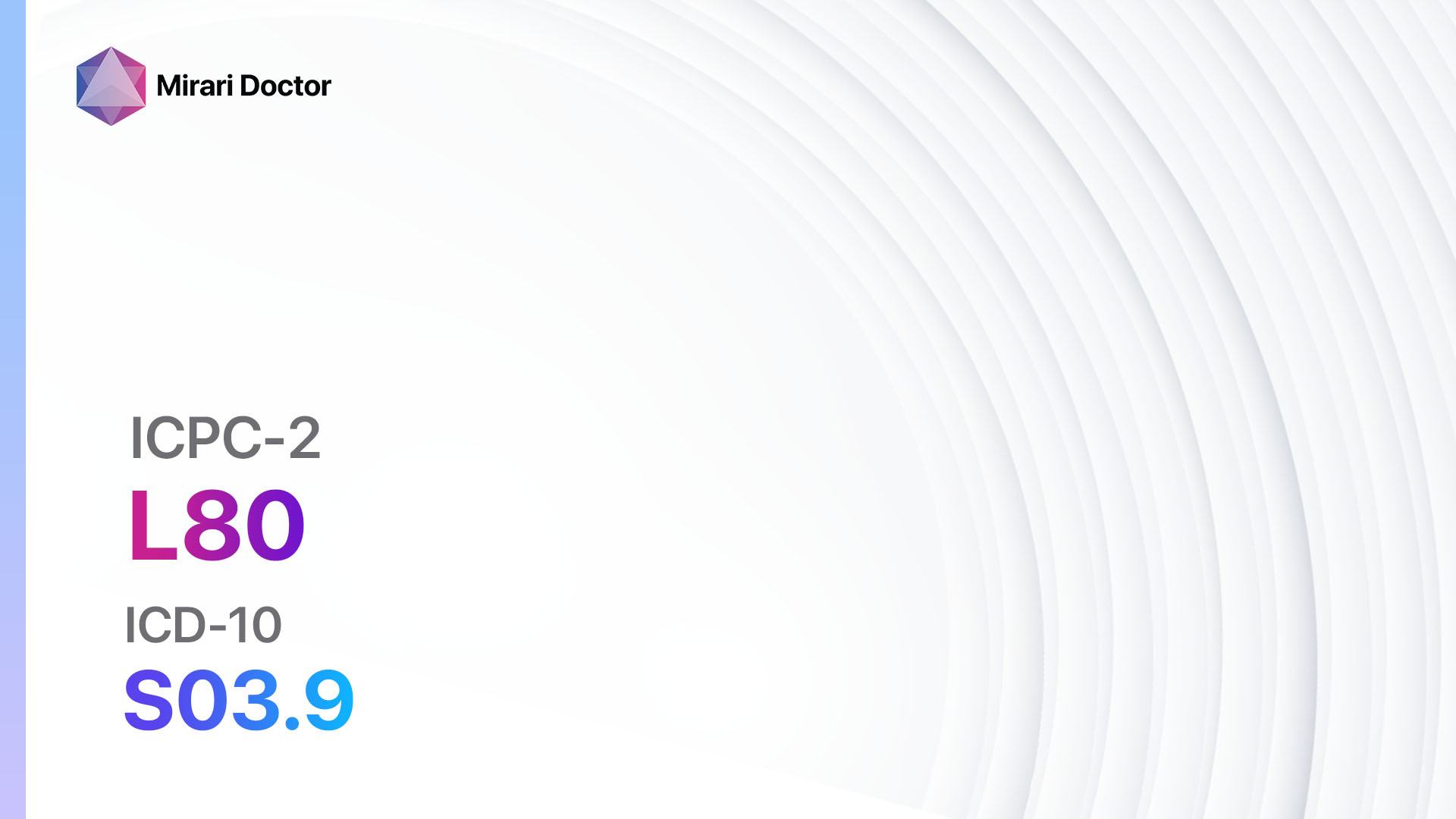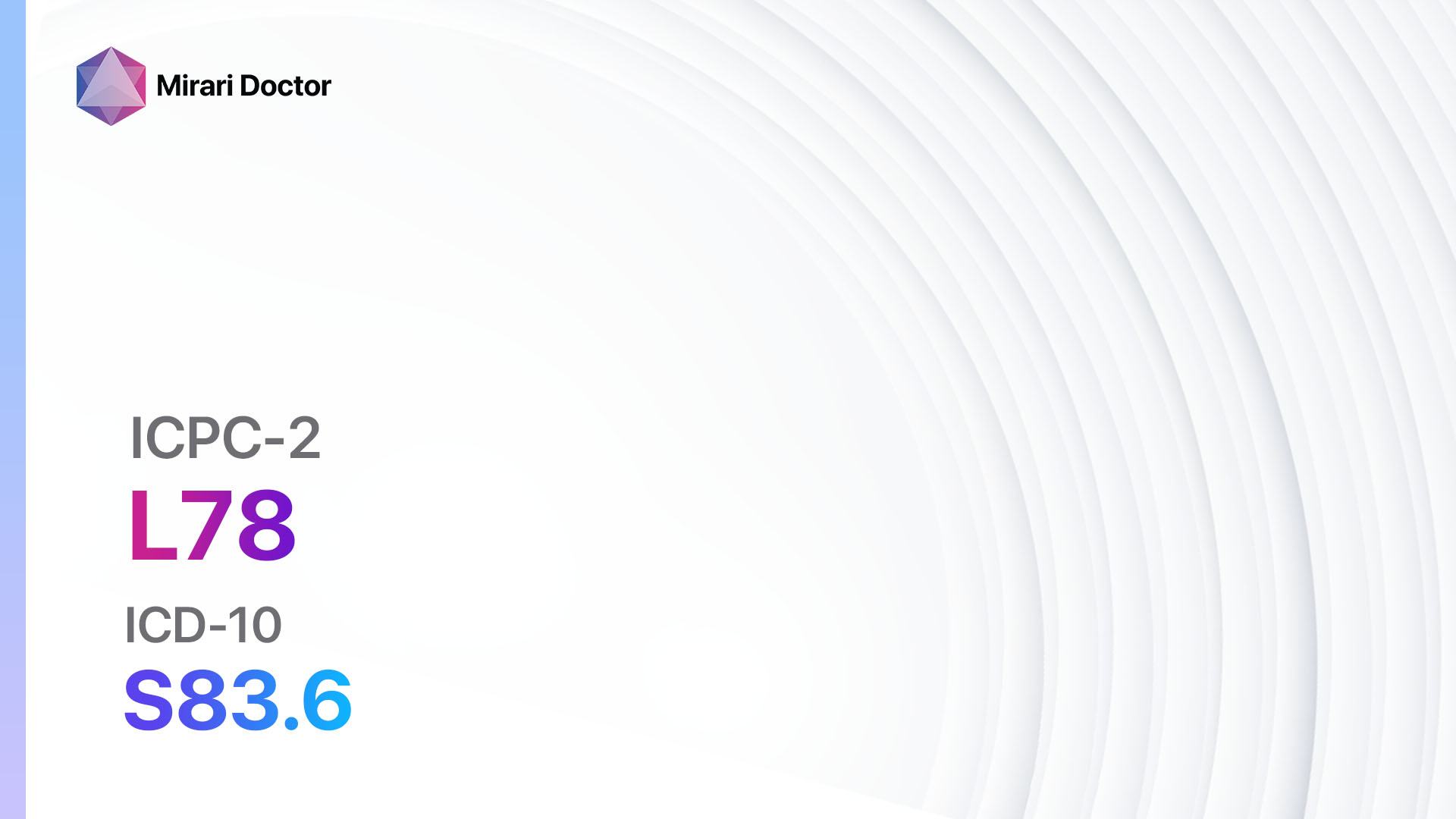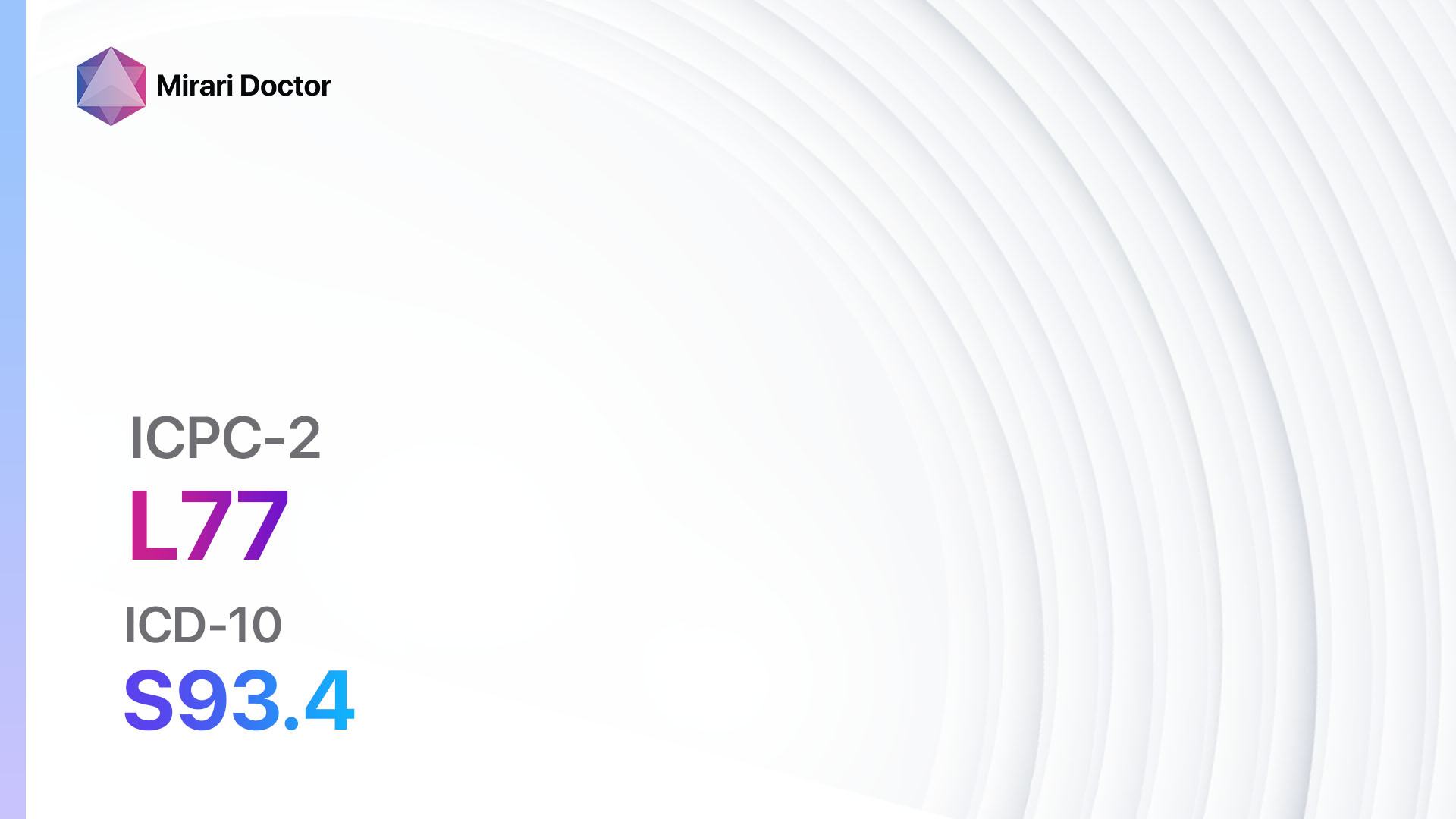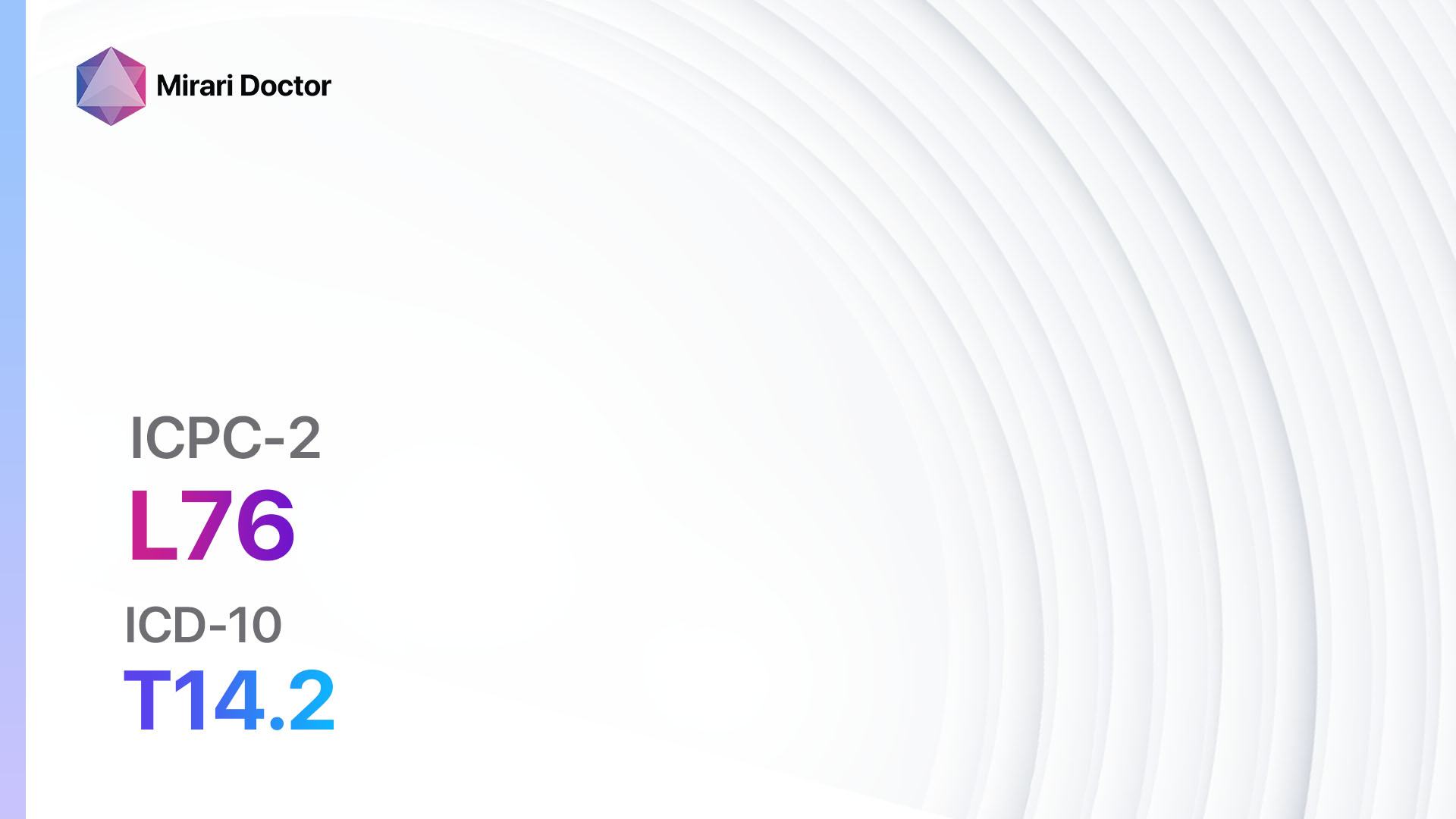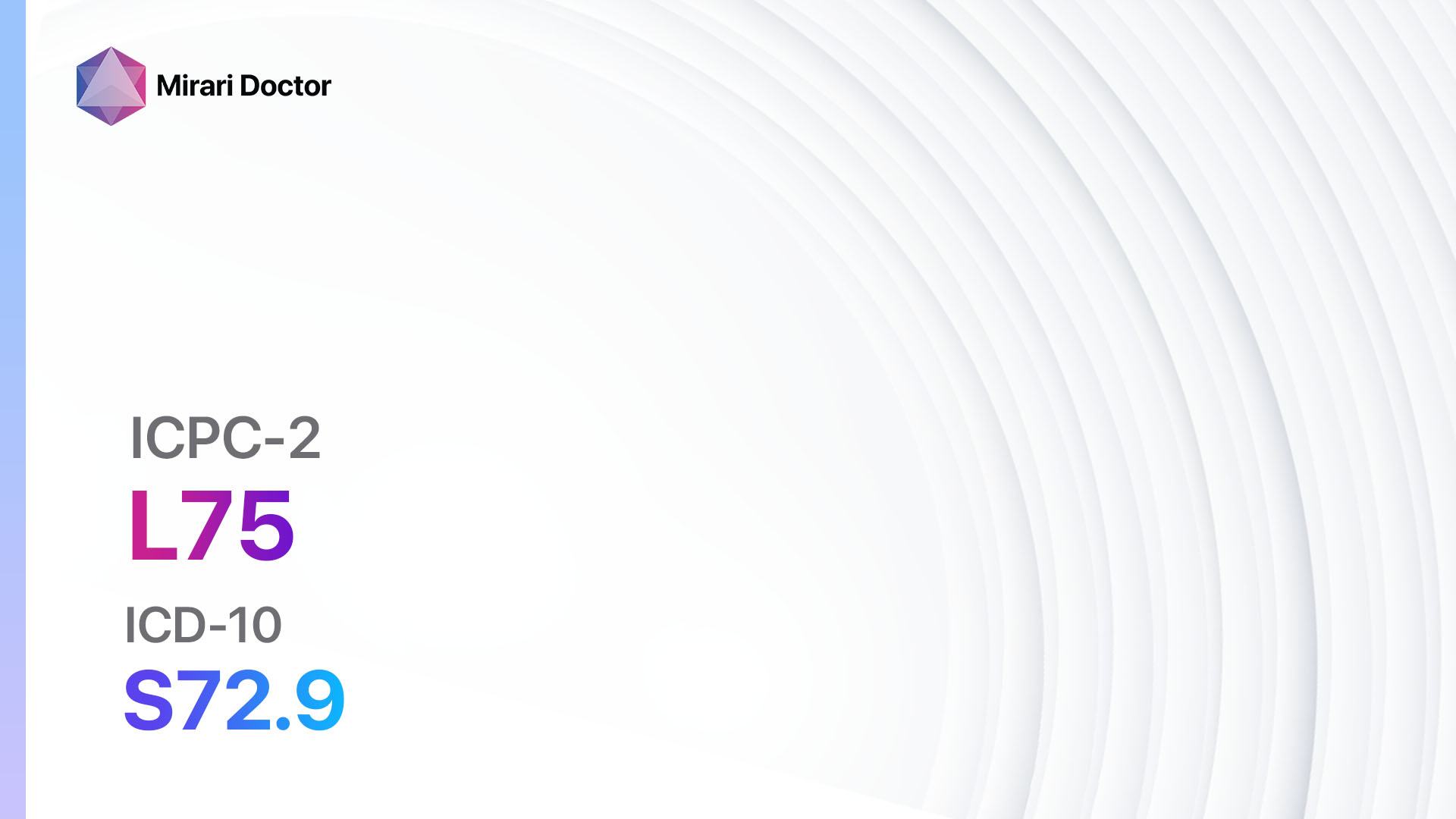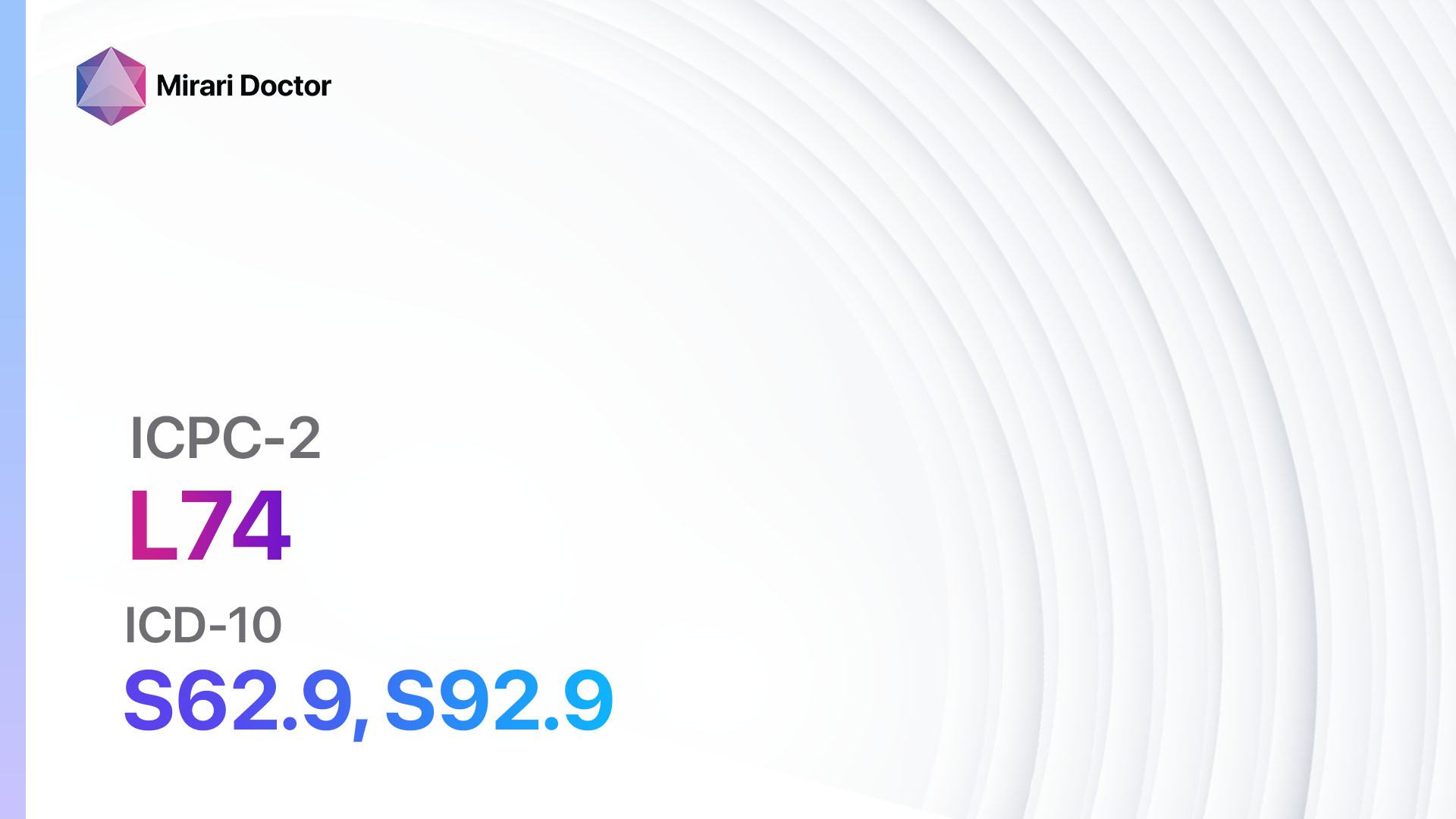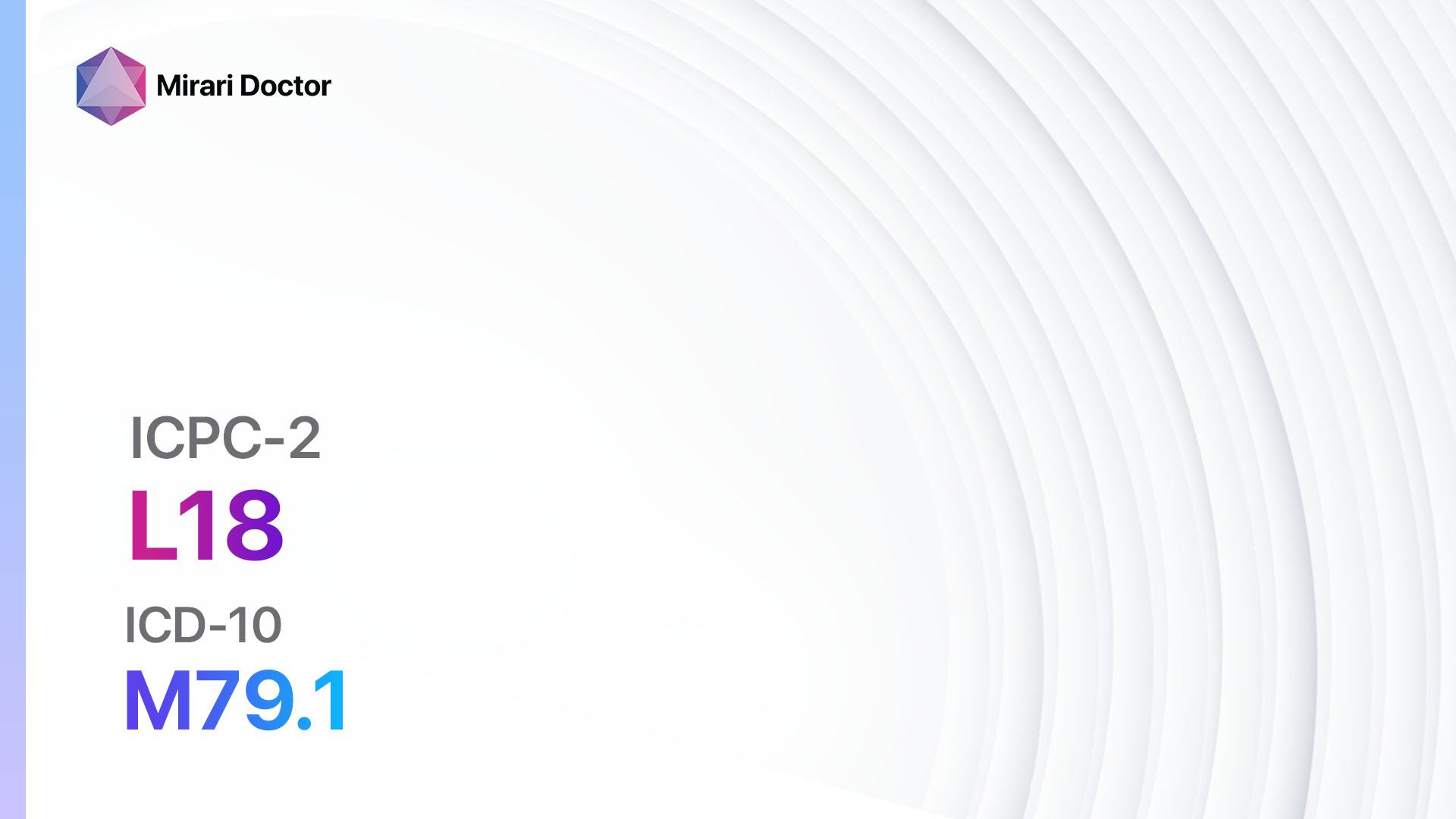
Introduction
Muscle pain, also known as myalgia, refers to discomfort or pain in the muscles. It can be caused by various factors such as overuse, injury, or underlying medical conditions[1]. This guide aims to provide an overview of muscle pain, including its symptoms, causes, diagnostic steps, possible interventions, and lifestyle interventions.
Codes
Symptoms
- Generalized muscle pain: Aching or soreness in multiple muscle groups[4].
- Localized muscle pain: Discomfort or pain in a specific muscle or muscle group[4].
- Muscle stiffness: Difficulty in moving or flexing the affected muscles[5].
- Muscle weakness: Reduced strength or inability to exert force with the affected muscles[6].
- Muscle cramps: Sudden, involuntary contractions of muscles that can be painful[7].
Causes
- Overuse or muscle strain: Excessive or repetitive use of muscles, leading to muscle fatigue and pain[8].
- Injury or trauma: Direct impact or damage to muscles due to accidents, falls, or sports-related activities[9].
- Inflammatory conditions: Conditions such as fibromyalgia, polymyalgia rheumatica, or myositis can cause muscle pain[10].
- Infections: Viral or bacterial infections, such as influenza or Lyme disease, can lead to muscle pain.
- Medications: Certain medications, such as statins or ACE inhibitors, may cause muscle pain as a side effect.
- Systemic diseases: Underlying conditions like lupus, rheumatoid arthritis, or hypothyroidism can cause muscle pain.
Diagnostic Steps
Medical History
- Gather information about the onset, duration, and location of muscle pain.
- Identify any triggering factors or activities that worsen the pain.
- Assess the presence of other symptoms, such as fever, fatigue, or joint pain.
- Inquire about any recent infections or changes in medication.
Physical Examination
- Perform a thorough examination of the affected muscles, assessing for tenderness, swelling, or deformities.
- Evaluate the range of motion and strength of the muscles.
- Check for any signs of inflammation or redness in the affected area.
- Palpate the surrounding joints to rule out any joint-related causes of muscle pain.
Laboratory Tests
- Creatine kinase (CK) levels: Elevated CK levels may indicate muscle damage or inflammation.
- Complete blood count (CBC): To rule out infections or systemic diseases.
- Erythrocyte sedimentation rate (ESR) and C-reactive protein (CRP): Elevated levels may suggest underlying inflammatory conditions.
- Thyroid function tests: To assess thyroid hormone levels, as hypothyroidism can cause muscle pain.
- Rheumatoid factor and antinuclear antibody (ANA) tests: To evaluate for autoimmune conditions.
Diagnostic Imaging
- X-rays: Useful for assessing bone abnormalities or fractures that may be causing muscle pain.
- Ultrasound: Can help visualize soft tissues, such as muscles or tendons, for any abnormalities or tears.
- Magnetic resonance imaging (MRI): Provides detailed images of muscles, tendons, and surrounding structures to identify any injuries or abnormalities.
- Computed tomography (CT) scan: Useful for evaluating bone and soft tissue structures in more detail.
Other Tests
- Electromyography (EMG): Measures the electrical activity of muscles and nerves to assess for any abnormalities or nerve-related causes of muscle pain.
- Nerve conduction studies: Measures the speed and strength of electrical signals in nerves to evaluate for any nerve damage or dysfunction.
Follow-up and Patient Education
- Schedule follow-up appointments to monitor the progress of the patient’s condition.
- Provide education on self-care measures, such as rest, ice or heat therapy, and gentle stretching exercises.
- Discuss the importance of maintaining a healthy lifestyle, including regular exercise and proper nutrition, to prevent muscle pain.
Possible Interventions
Traditional Interventions
Medications:
Top 5 drugs for muscle pain:
- Nonsteroidal anti-inflammatory drugs (NSAIDs) (e.g., Ibuprofen, Naproxen):
- Cost: Generic versions can be $3-$20/month.
- Contraindications: History of gastrointestinal bleeding, renal impairment.
- Side effects: Upset stomach, heartburn, dizziness.
- Severe side effects: Gastrointestinal bleeding, kidney damage.
- Drug interactions: Aspirin, anticoagulants.
- Warning: Prolonged use may increase the risk of cardiovascular events.
- Acetaminophen:
- Cost: Generic versions can be $3-$10/month.
- Contraindications: Severe liver disease, alcoholism.
- Side effects: Rare at therapeutic doses.
- Severe side effects: Liver damage (with high doses or chronic use).
- Drug interactions: Alcohol, certain medications metabolized by the liver.
- Warning: Avoid exceeding the recommended daily dose.
- Muscle relaxants (e.g., Cyclobenzaprine, Methocarbamol):
- Cost: Generic versions can be $10-$30/month.
- Contraindications: Glaucoma, urinary retention.
- Side effects: Drowsiness, dry mouth, dizziness.
- Severe side effects: Allergic reactions, liver toxicity.
- Drug interactions: Sedatives, alcohol.
- Warning: Avoid driving or operating machinery while taking muscle relaxants.
- Topical analgesics (e.g., Menthol, Capsaicin):
- Cost: Varies depending on the specific product.
- Contraindications: Open wounds, hypersensitivity.
- Side effects: Local skin irritation, burning sensation.
- Severe side effects: Allergic reactions.
- Drug interactions: None reported.
- Warning: Wash hands thoroughly after applying topical analgesics.
- Antidepressants (e.g., Amitriptyline, Duloxetine):
- Cost: Generic versions can be $10-$50/month.
- Contraindications: Recent myocardial infarction, narrow-angle glaucoma.
- Side effects: Dry mouth, drowsiness, constipation.
- Severe side effects: Suicidal thoughts, serotonin syndrome.
- Drug interactions: Monoamine oxidase inhibitors (MAOIs), other serotonergic drugs.
- Warning: Monitor for changes in mood or behavior.
Alternative Drugs:
- Gabapentin: An anticonvulsant that can help relieve neuropathic pain.
- Tricyclic antidepressants: Can be effective in managing chronic muscle pain.
- Steroid injections: Intra-articular or intramuscular injections of corticosteroids may provide temporary relief for severe muscle pain.
- Opioids: Reserved for severe, unresponsive cases of muscle pain, but caution should be exercised due to the risk of dependence and side effects.
Surgical Procedures:
- Surgical interventions are not typically indicated for muscle pain unless there is an underlying structural abnormality or injury that requires surgical correction.
Alternative Interventions
- Physical therapy: Involves exercises, stretches, and manual techniques to improve muscle strength, flexibility, and reduce pain. Cost: $50-$150 per session.
- Massage therapy: Manipulation of soft tissues to promote relaxation, improve blood flow, and reduce muscle tension. Cost: $60-$120 per session.
- Chiropractic care: Manual adjustments and manipulations of the spine and joints to alleviate muscle pain. Cost: $50-$200 per session.
- Acupuncture: Involves the insertion of thin needles into specific points on the body to stimulate nerve pathways and promote pain relief. Cost: $60-$120 per session.
- Yoga or Pilates: Incorporating gentle stretching, strengthening, and relaxation techniques to improve muscle function and reduce pain. Cost: Varies depending on the location and instructor.
Lifestyle Interventions
- Rest and relaxation: Adequate rest and relaxation can help reduce muscle tension and promote healing. Cost: Free.
- Heat or cold therapy: Applying heat or cold packs to the affected muscles can help alleviate pain and reduce inflammation. Cost: Varies depending on the specific product.
- Regular exercise: Engaging in low-impact exercises, such as swimming or walking, can help improve muscle strength and flexibility. Cost: Free or minimal cost for gym memberships or fitness classes.
- Stress management: Practicing stress-reducing techniques, such as meditation or deep breathing exercises, can help alleviate muscle tension and pain. Cost: Free or minimal cost for stress management classes or apps.
- Proper ergonomics: Maintaining good posture and using ergonomic equipment can help prevent muscle strain and pain. Cost: Varies depending on the specific ergonomic products.
It is important to note that the cost ranges provided are approximate and may vary depending on the location and availability of the interventions.
Mirari Cold Plasma Alternative Intervention
Understanding Mirari Cold Plasma
- Safe and Non-Invasive Treatment: Mirari Cold Plasma is a safe and non-invasive treatment option for various skin conditions. It does not require incisions, minimizing the risk of scarring, bleeding, or tissue damage.
- Efficient Extraction of Foreign Bodies: Mirari Cold Plasma facilitates the removal of foreign bodies from the skin by degrading and dissociating organic matter, allowing easier access and extraction.
- Pain Reduction and Comfort: Mirari Cold Plasma has a local analgesic effect, providing pain relief during the treatment, making it more comfortable for the patient.
- Reduced Risk of Infection: Mirari Cold Plasma has antimicrobial properties, effectively killing bacteria and reducing the risk of infection.
- Accelerated Healing and Minimal Scarring: Mirari Cold Plasma stimulates wound healing and tissue regeneration, reducing healing time and minimizing the formation of scars.
Mirari Cold Plasma Prescription
Video instructions for using Mirari Cold Plasma Device – L18 Muscle pain (ICD-10:M79.1)
| Mild | Moderate | Severe |
| Mode setting: 2 (Wound Healing) Location: 0 (Localized) Morning: 15 minutes, Evening: 15 minutes |
Mode setting: 2 (Wound Healing) Location: 0 (Localized) Morning: 30 minutes, Lunch: 30 minutes, Evening: 30 minutes |
Mode setting: 2 (Wound Healing) Location: 0 (Localized) Morning: 30 minutes, Lunch: 30 minutes, Evening: 30 minutes |
| Mode setting: 9 (Arthritis) Location: 0 (Localized) Morning: 15 minutes, Evening: 15 minutes |
Mode setting: 9 (Arthritis) Location: 0 (Localized) Morning: 30 minutes, Lunch: 30 minutes, Evening: 30 minutes |
Mode setting: 9 (Arthritis) Location: 0 (Localized) Morning: 30 minutes, Lunch: 30 minutes, Evening: 30 minutes |
| Mode setting: 7 (Immunotherapy) Location: 1 (Sacrum) Morning: 15 minutes, Evening: 15 minutes |
Mode setting: 7 (Immunotherapy) Location: 1 (Sacrum) Morning: 30 minutes, Lunch: 30 minutes, Evening: 30 minutes |
Mode setting: 7 (Immunotherapy) Location: 1 (Sacrum) Morning: 30 minutes, Lunch: 30 minutes, Evening: 30 minutes |
| Total Morning: 45 minutes approx. $7.50 USD, Evening: 45 minutes approx. $7.50 USD |
Total Morning: 90 minutes approx. $15 USD, Lunch: 90 minutes approx. $15 USD, Evening: 90 minutes approx. $15 USD, |
Total Morning: 90 minutes approx. $15 USD, Lunch: 90 minutes approx. $15 USD, Evening: 90 minutes approx. $15 USD, |
| Usual treatment for 7-60 days approx. $105 USD – $900 USD | Usual treatment for 6-8 weeks approx. $1,890 USD – $2,520 USD |
Usual treatment for 3-6 months approx. $4,050 USD – $8,100 USD
|
 |
|
Use the Mirari Cold Plasma device to treat Muscle pain effectively.
WARNING: MIRARI COLD PLASMA IS DESIGNED FOR THE HUMAN BODY WITHOUT ANY ARTIFICIAL OR THIRD PARTY PRODUCTS. USE OF OTHER PRODUCTS IN COMBINATION WITH MIRARI COLD PLASMA MAY CAUSE UNPREDICTABLE EFFECTS, HARM OR INJURY. PLEASE CONSULT A MEDICAL PROFESSIONAL BEFORE COMBINING ANY OTHER PRODUCTS WITH USE OF MIRARI.
Step 1: Cleanse the Skin
- Start by cleaning the affected area of the skin with a gentle cleanser or mild soap and water. Gently pat the area dry with a clean towel.
Step 2: Prepare the Mirari Cold Plasma device
- Ensure that the Mirari Cold Plasma device is fully charged or has fresh batteries as per the manufacturer’s instructions. Make sure the device is clean and in good working condition.
- Switch on the Mirari device using the power button or by following the specific instructions provided with the device.
- Some Mirari devices may have adjustable settings for intensity or treatment duration. Follow the manufacturer’s instructions to select the appropriate settings based on your needs and the recommended guidelines.
Step 3: Apply the Device
- Place the Mirari device in direct contact with the affected area of the skin. Gently glide or hold the device over the skin surface, ensuring even coverage of the area experiencing.
- Slowly move the Mirari device in a circular motion or follow a specific pattern as indicated in the user manual. This helps ensure thorough treatment coverage.
Step 4: Monitor and Assess:
- Keep track of your progress and evaluate the effectiveness of the Mirari device in managing your Muscle pain. If you have any concerns or notice any adverse reactions, consult with your health care professional.
Note
This guide is for informational purposes only and should not replace the advice of a medical professional. Always consult with your healthcare provider or a qualified medical professional for personal advice, diagnosis, or treatment. Do not solely rely on the information presented here for decisions about your health. Use of this information is at your own risk. The authors of this guide, nor any associated entities or platforms, are not responsible for any potential adverse effects or outcomes based on the content.
Mirari Cold Plasma System Disclaimer
- Purpose: The Mirari Cold Plasma System is a Class 2 medical device designed for use by trained healthcare professionals. It is registered for use in Thailand and Vietnam. It is not intended for use outside of these locations.
- Informational Use: The content and information provided with the device are for educational and informational purposes only. They are not a substitute for professional medical advice or care.
- Variable Outcomes: While the device is approved for specific uses, individual outcomes can differ. We do not assert or guarantee specific medical outcomes.
- Consultation: Prior to utilizing the device or making decisions based on its content, it is essential to consult with a Certified Mirari Tele-Therapist and your medical healthcare provider regarding specific protocols.
- Liability: By using this device, users are acknowledging and accepting all potential risks. Neither the manufacturer nor the distributor will be held accountable for any adverse reactions, injuries, or damages stemming from its use.
- Geographical Availability: This device has received approval for designated purposes by the Thai and Vietnam FDA. As of now, outside of Thailand and Vietnam, the Mirari Cold Plasma System is not available for purchase or use.
References
- Mense, S. (2008). Muscle pain: mechanisms and clinical significance. Deutsches Ärzteblatt International, 105(12), 214.
- ICPC-2 – English. (n.d.). Retrieved from https://www.globalfamilydoctor.com/site/DefaultSite/filesystem/documents/Groups/WICC/International%20Classification%20of%20Primary%20Care%20Dec16.pdf
- ICD-10 Version:2016. (n.d.). Retrieved from https://icd.who.int/browse10/2016/en#/M79.1
- Muscle aches. (2021, February 11). Retrieved from https://www.mayoclinic.org/symptoms/muscle-pain/basics/definition/sym-20050866
- Muscle stiffness. (n.d.). Retrieved from https://www.webmd.com/pain-management/guide/muscle-stiffness
- Muscle weakness. (2021, January 16). Retrieved from https://www.mayoclinic.org/symptoms/muscle-weakness/basics/definition/sym-20050837
- Muscle cramp. (2021, January 3). Retrieved from https://www.mayoclinic.org/diseases-conditions/muscle-cramp/symptoms-causes/syc-20350820
- Muscle pain. (n.d.). Retrieved from https://www.mountsinai.org/health-library/symptoms/muscle-aches
- Statin side effects: Weigh the benefits and risks. (2020, December 8). Retrieved from https://www.mayoclinic.org/diseases-conditions/high-blood-cholesterol/in-depth/statin-side-effects/art-20046013
- Electromyography (EMG). (2021, May 7). Retrieved from https://www.mayoclinic.org/tests-procedures/emg/about/pac-20393913
Related articles
Made in USA



